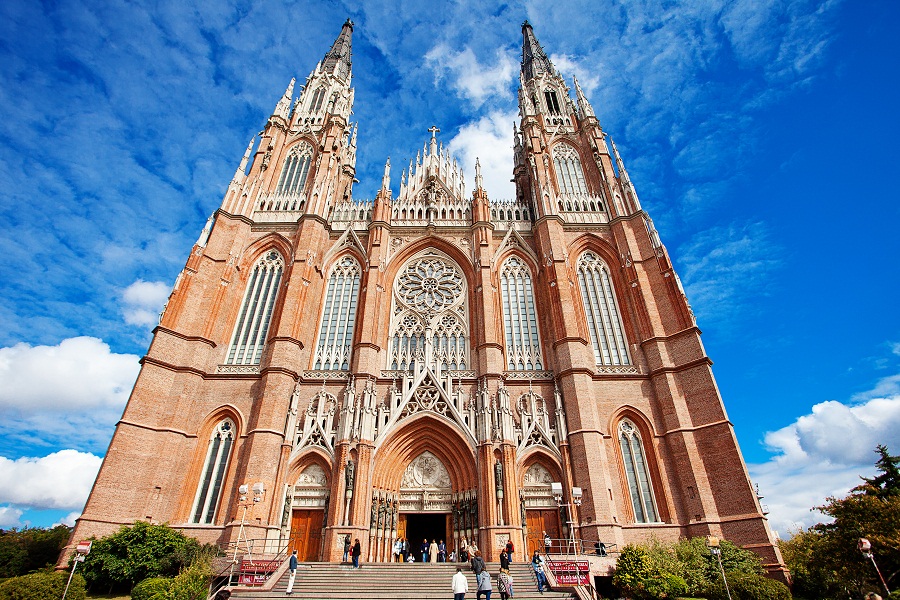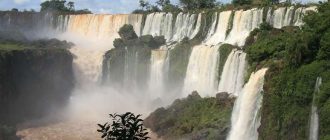Argentina has several famous Landmarks. To find out more information about natural Argentine landmarks as well as national monuments read our guide…
The eighth largest country in the world, Argentina offers a variety of manmade and natural landmarks. There are sites for religious pilgrimage, architectural monuments and environmental wonders. With a climate that runs the gamut from sub-tropical to sub-arctic, natural landmarks in Argentina are abundant and varied.
Natural Wonders
The Igauzu Waterfall is located in the northwest corner of Argentina at the borders of Brazil and Paraguay. It is 2.7 kilometers across with a 900 meter section where no water cascades over the falls. Tours by boat and helicopter are available to allow visitors to experience the full beauty of the area. In the Devil’s Falls area, the water descends an incredible 230 feet. Flights are available from Buenos Aires and take about an hour and thirty minutes.
As natural Argentine landmarks go it is difficult to beat Igauzu Waterfalls, but the Perito Moreno Glacier is fairly spectacular. Periodically it advances over Lago Argentina creating a natural ice dam. When the water pressure builds up, the ice dam ruptures and this occurs at between one and ten year intervals. Argentina boasts three glaciers, including Perito Moreno, which is still growing in size. Walking tours of the glacier are available for tourists.
Important Religious Sites
The legend of the Difunta Correa (dead woman) Shrine in Vallecito began during the Argentine Civil War in the 1850s. A women with an infant child followed her soldier husband through the San Juan Desert where she died of thirst and exposure. When found by villagers her infant son was miraculously still alive, suckling at her breast. A shrine was built to commemorate the miracle and countless pilgrims visit the site to ask for miracles for themselves and loved ones.
The Sanctuario Cruz de Gil is located west of the city of Mercedes and is another famous place of pilgrimage. Gaucho Gil is a folk saint revered by many Argentinians. Like the English Robin Hood, Gil robbed from the rich and shared his booty with the poor. He was beheaded and prior to his death foretold the executioner of two events, his own pardon and the serious illness of the man’s son. Both prophecies were true.
Architectual Landmarks
The Basilica Nuestra Senora de Lujan is an architectural masterpiece in the French neo Gothic style. Construction took 48 years and the basilica was completed in 1935. Built of pink stone, it features sculptures of the 4 evangelists and the 12 apostles. Located 65 miles from Argentina’s capital city of Buenos Aires, the basilica is a national treasure.
The Obelisk of Buenos Aires was built during the first half of the twentieth century. Located in an area of the city analogous to New York’s Times Square, the Obelisk stands 67.5 meters tall and was built to commemorate the city’s fourth centennial on the site where the first Argentinian flag was hoisted in 1812. As a site of both historic and architectural importance, the Obelisk is a must see for visitors to Buenos Aires.





